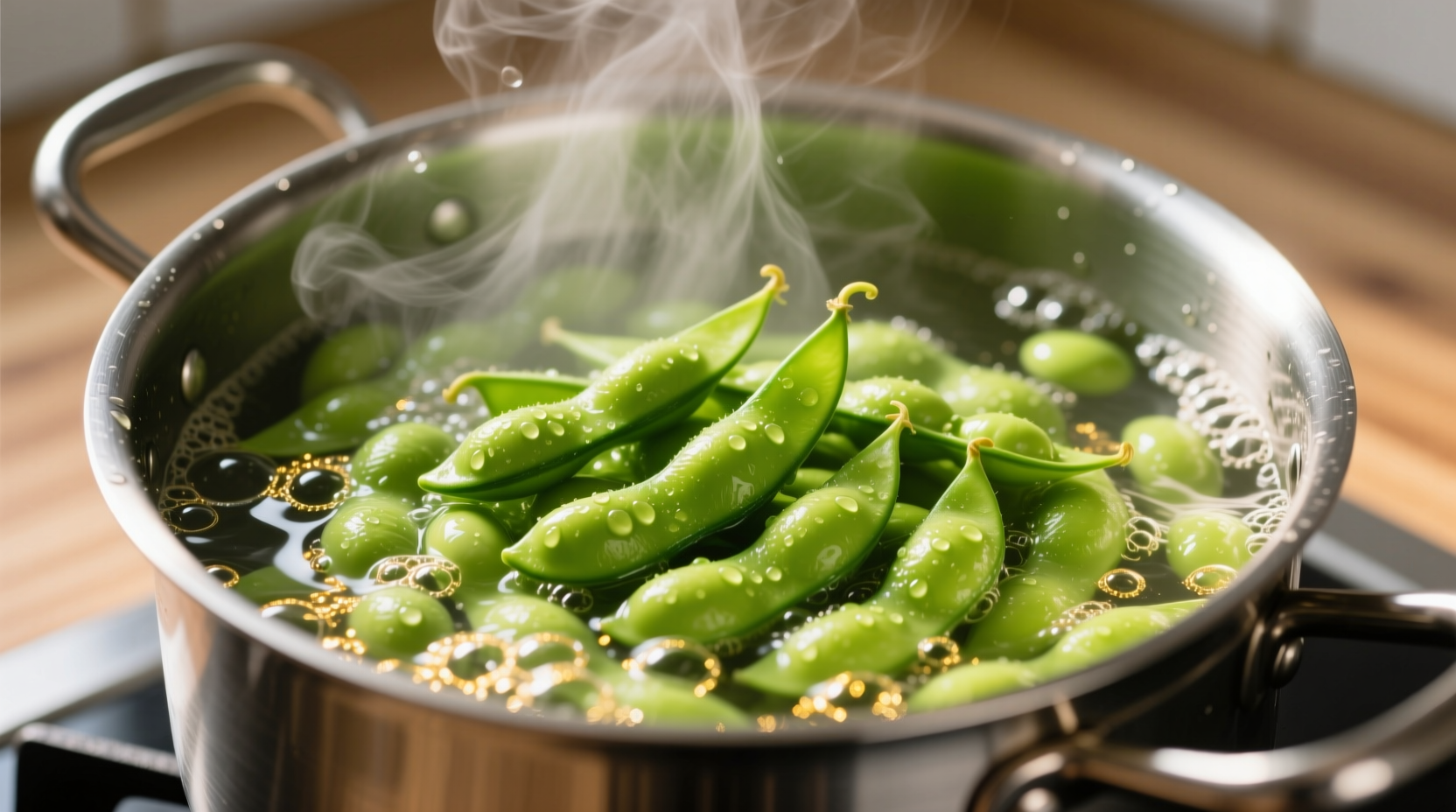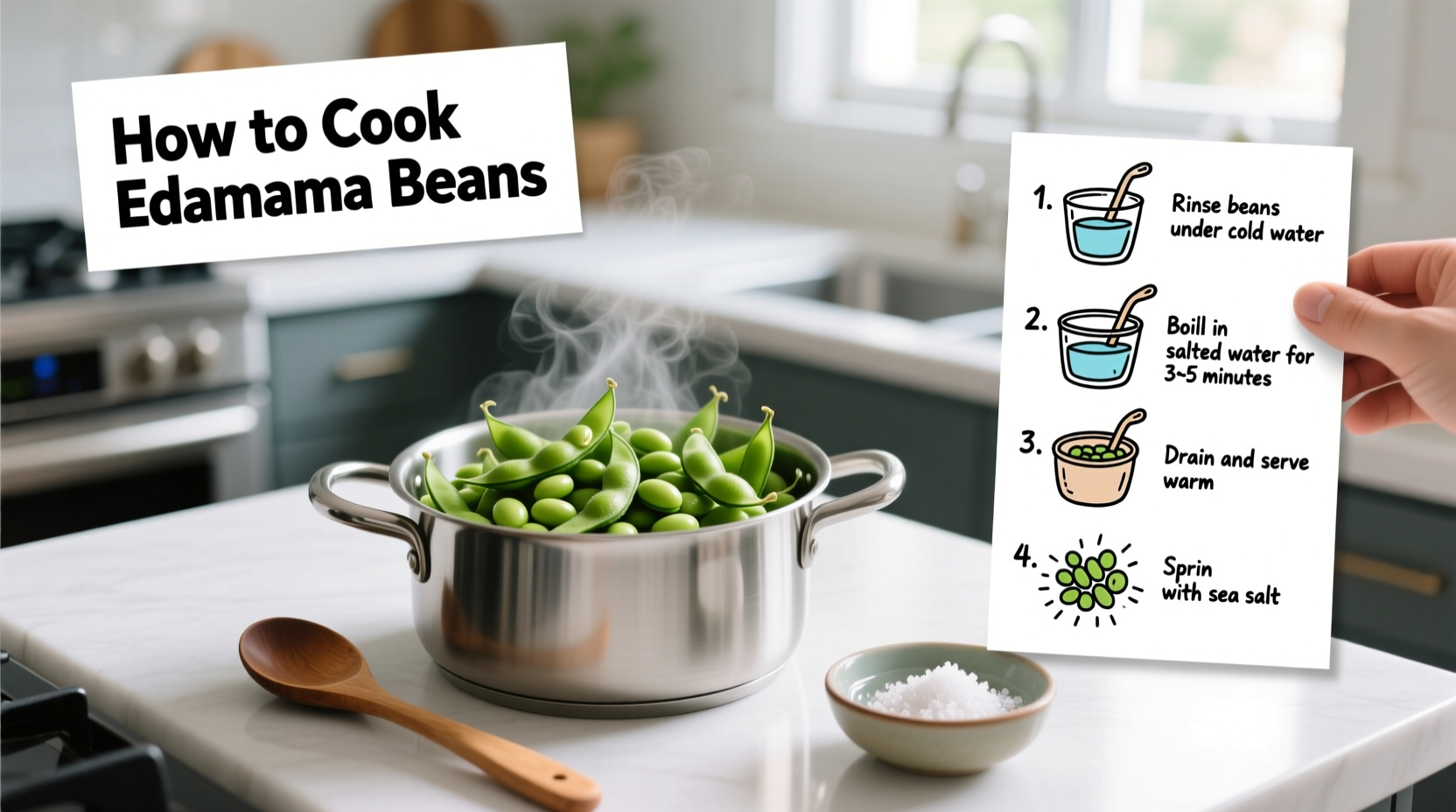Edamame, those vibrant green soybeans still in their pods, have become a staple snack and appetizer worldwide. But many home cooks struggle with getting that perfect tender-yet-toothy texture without ending up with mushy or undercooked beans. The good news? Mastering edamame preparation is simpler than you think, and this guide delivers professional techniques that guarantee success whether you're using frozen or fresh pods.
Understanding Edamame Basics
Edamame are immature soybeans harvested before the beans harden. Unlike mature soybeans used for tofu or soy milk, edamame are eaten fresh or frozen in their pods. Packed with complete protein, fiber, and essential nutrients, they're a nutritional powerhouse that deserves a regular spot in your kitchen.
| Preparation Method | Time Required | Texture Result | Nutrient Retention |
|---|---|---|---|
| Boiling | 3-5 minutes | Firm yet tender | Good |
| Steaming | 5-7 minutes | Slightly firmer | Excellent |
| Microwave | 4-6 minutes | Variable | Fair |
| Air Fryer | 8-10 minutes | Crispy exterior | Good |
According to USDA FoodData Central, one cup of cooked edamame provides approximately 17 grams of complete protein and 8 grams of dietary fiber, making it an exceptional plant-based protein source. The cooking method significantly impacts nutrient retention—steaming preserves more water-soluble vitamins compared to boiling.
Essential Preparation Steps
Before you start cooking, proper preparation ensures optimal results. For frozen edamame (the most common variety available), there's no need to thaw—cooking directly from frozen yields better texture. Fresh edamame should be rinsed thoroughly to remove any field debris.
Fill a large pot with enough water to generously cover the edamame pods. For every quart of water, add 1 tablespoon of coarse salt and, optionally, a 2-inch piece of kombu seaweed—a traditional Japanese technique that enhances flavor and aids digestion. Bring the water to a rolling boil before adding the edamame.

Perfect Cooking Methods
Boiling Method (Most Common)
This traditional approach delivers consistent results every time:
- Bring salted water to a vigorous boil
- Add edamame pods (about 1 pound per 4 servings)
- Cook for exactly 3-5 minutes—no longer
- Immediately transfer to a bowl of ice water
- Drain thoroughly before serving
Overcooking is the most common mistake—edamame continues to cook from residual heat even after removal from water. The ice bath stops the cooking process instantly, preserving that vibrant green color and perfect texture.
Steaming Method (Nutrient Preservation)
For maximum nutrient retention, steaming offers distinct advantages:
- Place pods in a steamer basket over 1 inch of simmering salted water
- Cover and steam for 5-7 minutes until pods feel slightly tender
- Remove immediately—no ice bath needed with this method
This technique preserves more vitamin C and B vitamins compared to boiling, as nutrients aren't leached into cooking water.
Microwave Method (Quickest Option)
When time is critical, this method works well:
- Place frozen edamame in a microwave-safe bowl with 2 tablespoons water
- Cover loosely and microwave on high for 4-6 minutes
- Drain any excess water and season immediately
While convenient, this method offers less control over final texture compared to stovetop methods.
Seasoning and Serving Techniques
Traditional Japanese preparation involves nothing more than coarse sea salt, but creative variations can enhance your edamame experience. After cooking and draining, immediately toss the warm pods with:
- Classic: Flaky sea salt or kosher salt
- Garlic-Infused: 1 teaspoon garlic powder with salt
- Spicy: 1/4 teaspoon cayenne pepper blended with salt
- Citrus: Zest of one lemon or lime with salt
Serve edamame in a large bowl with a separate bowl for empty pods. Traditional eating technique involves holding the pod at both ends and gently squeezing the beans into your mouth—don't eat the pods themselves! For parties, consider serving with small dishes of additional seasonings so guests can customize their experience.
Avoiding Common Mistakes
Even experienced cooks sometimes make these critical errors:
- Overcooking: Results in mushy beans that fall apart when squeezed from pods
- Under-salting: Edamame needs generous salt to balance their natural flavor
- Skipping the ice bath: For boiled edamame, this step is crucial for perfect texture
- Using table salt: Coarse salt adheres better and provides more controlled seasoning
Food safety experts at the FDA emphasize that soybeans must be cooked thoroughly to destroy trypsin inhibitors, naturally occurring compounds that can interfere with protein digestion. Properly cooked edamame presents no food safety concerns.
Storage and Reheating Guidelines
Cooked edamame maintain quality for 3-5 days when stored properly:
- Refrigeration: Store in an airtight container with minimal air exposure
- Freezing: Spread cooled pods on a baking sheet, freeze solid, then transfer to freezer bags
- Reheating: Steam for 2-3 minutes or microwave briefly with a damp paper towel
Never refreeze previously frozen edamame after cooking, as this significantly degrades texture. For best results, cook only what you'll consume immediately.











 浙公网安备
33010002000092号
浙公网安备
33010002000092号 浙B2-20120091-4
浙B2-20120091-4